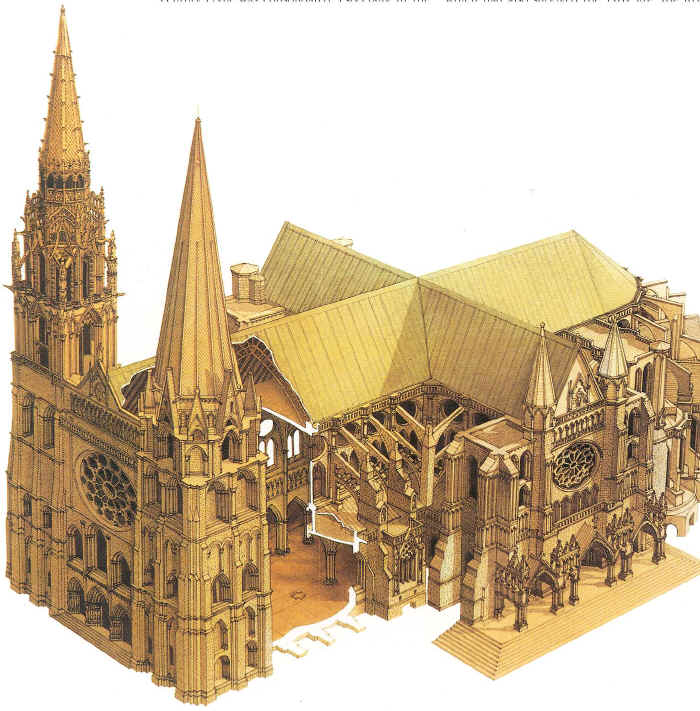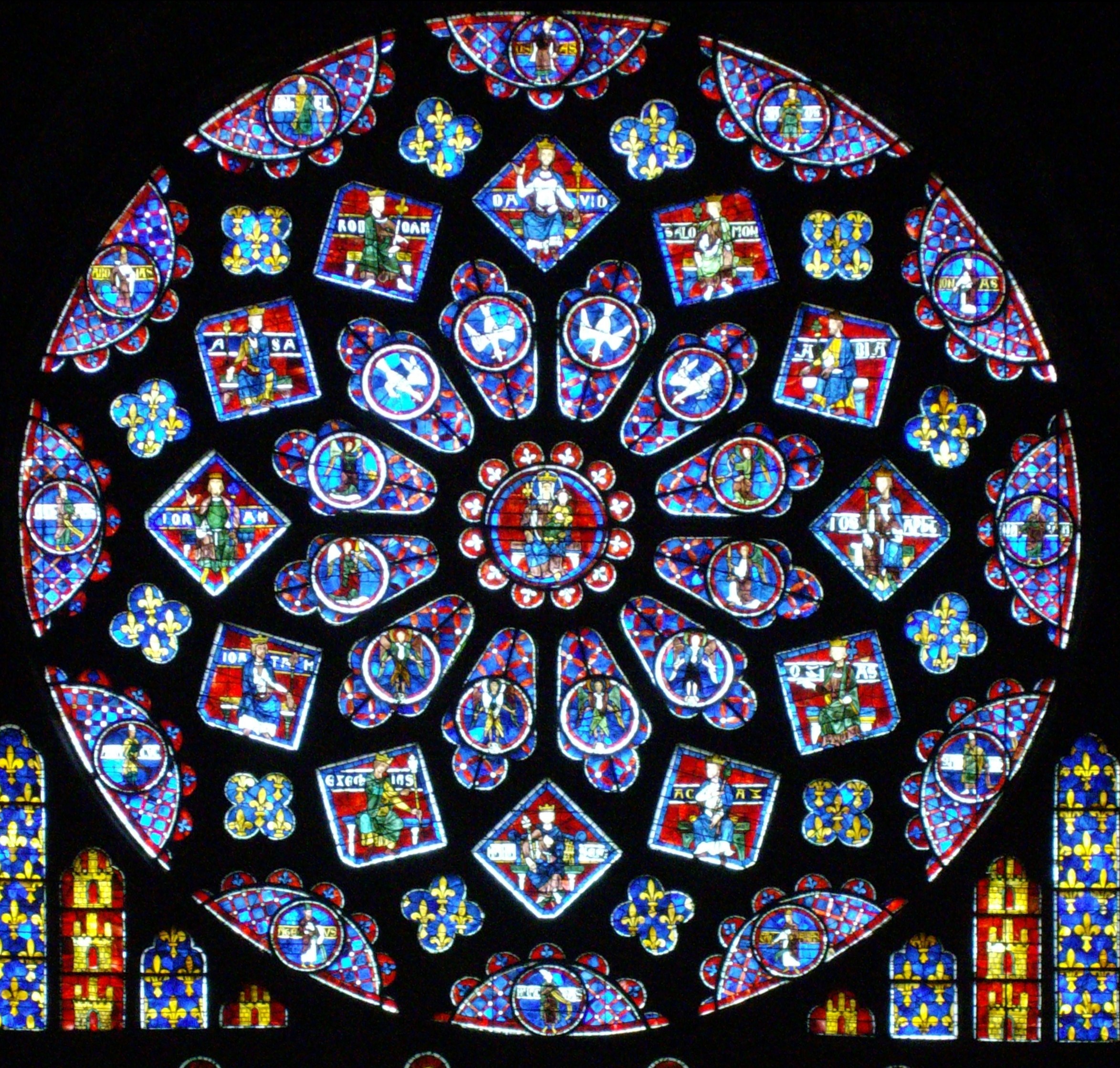The philosophical study
of what we do not know falls under the heading of nepistemology. Epistemology,
as many people will be aware, is the study of how knowledge comes into being.
Its complement, nepistemology,is the study of how ignorance becomes manifest.
Despite the extraordinary importance of nepistemology, the field has little
literature and even fewer practitioners.
Francis Bacon once wrote, truth comes out of error more rapidly than out of confusion. A clear mistake does far more good to any investigation by identifying the specific nature of the problem being addressed than any other method. Hence the trite (butt rue) aphorism that we learn best from our mistakes People who never err not only never succeed, but have no mistakes (and hence generate no problems) from which to learn
The things that are the
most interesting in terms of revealing ignorance are those that are the most
disturbing or which conflict most clearly with strongly held beliefs or practices.
Therefore, pay attention to the heretics, revolutionaries, and people stepping
to their own drummer. Many of their ideas will be wrong, but many of the problems
they reveal will be valid
In some Muslim countries, AIDS-prevention counselors are not allowed to mention the fact that AIDS is spread most commonly by homosexual men and female prostitutes because neither group may be mentioned in conversation or print. Thus, programs that have proven to be very effective in controlling AIDS in some countries cannot be used in others because of such taboos.
Socrates was put to death for the anti-social implications of his questions. Galileo was charged with heresy by the Catholic Church for daring to question the Ptolemaic view of the universe that underpinned Church doctrine.
Darwin became a pariah among fundamentalists of many religions for questioning whether God had indeed created man in His image.
Margaret Sanger and Marie Stopes, the revolutionaries who gave Western women contraceptive knowledge, each went to jail more than once. So did the many suffragettes who worked to give women the vote, simply for asking why women should not be able to do the things men do.
One must have the courage of such people in order to break the taboos that prevent most of us from asking certain types of questions or facing the consequences of certain types of answers.
The more dangerous the
questions are to people in power, the greater the courage needed to ask them.
The existence of a well-defined problem does not imply the existence of a
solution" (Benford, 1989, p. 155).
For example, many people have desired to create perpetual motion machines. The criteria defining the problem are extremely well defined: such a machine must be capable of creating more energy than it uses. Stated as a question, the problem becomes: how does one create energy de novo? Anyone who has physics knowledge knows that, while this is structurally and logically a well-formulated question, it is not a reasonable question. To create energy de novo would violate the laws of thermodynamics. Thus, despite the fact that the problem can be stated exactly, it can also be shown that the problem has no solution.
The question of whether God performs miracles is of the same class because miracles are, by definition, metaphysical or supernatural events beyond human comprehension, thereby placing any evidence beyond our ability to validate or replicate it.
Such questions are therefore beyond rational discourse and belong, properly so, to questions of faith.
Origins of
the concept what is to be intelligent
(and somewhat also what is to be non intelligent)
William M.lvins Jr, in his book Prints and visual communications, extensively quoted by McLuhan in the Galaxy of Gutenberg, and I specifically want to quote from there the following: (The Blocked Road, pags 3-20)
"From very ancient
times materials suitable for the making of prints have been available, and apposite
skills and crafts have been familiar, but they were not brought into conjunction
for the making of exactly repeatable pictorial statements in Europe until roughly
about A.D. 1400. In view of this it is worthwhile to
try to think about the situation as it was before there were any prints.
As it seems to be the usual custom to begin with the ancient Greeks when discussing
anything that has to do with culture, I shall follow the precedent. There is
no possible doubt about the intelligence, the curiosity, and the mental agility
of a few of the old Greeks. Neither can there be any doubt about the greatness
of their influence on subsequent European culture, even though for the last
five hundred years the world has been in active revolt against Greek ideas and
ideals. For a very long time we have been taught that
after the Greeks there came long periods in which men were not so intelligent
as the Greeks had been, and that it was not until the Renaissance that the so
intelligent Greek point of view was to some extent recovered. I
believe that this teaching, like its general acceptance, has come about because
people have confused their ideas of what constitutes intelligence with their
ideas about what they have thought of, in the Arnoldian
sense, as culture, Culture and intelligence are quite different things.
In actual life, people who exemplify Arnoldian culture are no more intelligent
than other people, and they have very rarely been among the great creators,
the discoverers of new ideas, or the leaders towards social enlightenment. Most
of what we think of as culture is little more than the unquestioning acceptance
of standardized values.
Historians until very recent times have been literary men and philologues. As
students of the past they have rarely found anything they were not looking for.
They have been so full of wonder at what the Greeks
said, that they have paid little attention to what the Greeks did not do or
know. They have been so full of horror at what the Dark Ages did
not say that they have paid no attention to what they
did do and know. Modern research, by men who are aware of low subjects
like economics and technology, is changing our ideas about these matters. In
the Dark Ages, to use their traditional name, there was little assured leisure
for pursuit of the niceties of literature, art, philosophy, and theoretical
science, but many people, nevertheless, addressed their perfectly good minds
to social, agricultural, and mechanical problems. Moreover, all through those
academically debased centuries, so far from there having been any falling off
in mechanical ability, there was an unbroken series of discoveries and inventions
that gave the Dark Ages, and after them the Middle Ages, a technology, and,
therefore, a logic, that in many most important respects far surpassed anything
that had been known to the Greeks or to the Romans of the Western Empire.
As to the notorious degradation of the Dark Ages, it is to be remembered that
during them Byzantium was an integral part of Europe and actually its great
political centre of gravity. There was no iron curtain between the East and
the West. Intercourse between them was constant and unbroken, and for long periods
Byzantium was in actual control of large parts of Italy. We forget the meaning
of the word Romagna, and of the Byzantine arts of Venice and South Italy. These
things should be borne in mind in view of the silent implication that Byzantium,
from which later on so much of Greek learning came to the West, never lost that
learning. This implication is probably quite an untrue one. Both
East and West saw a great decline in letters. The Academy at Athens was closed
in A.D. 529. At Byzantium the university was abolished in the first half of
the eighth century. Psellos said that in the reign of the Emperor
Romanos (1028-34) the learned at Constantinople had not reached further than
the portals of Aristotle and only knew by rote a few catch words of Platonism.
The Emperor Constantine (1042-54) revived the university on a small scale and
made Psellos its first professor of philosophy. Psellos taught Platonism, which
he personally preferred to the then reigning variety of Aristotelianism. So
far as concerned intellectual activity there was probably much more in the West
than in the East, though directed at such different ends that it evaded the
attention of students trained in the traditional classical lore. Where the East
let so much of the inherited culture as it retained become gradually static
and dull, the West turned from it and addressed its intelligence to new values
and new things.
In spite of all this it was the Dark Ages that transmitted to us practically
all we have of Greek and Roman literature, science, and philosophy. If
the Dark Ages had not to a certain extent bee interested in such things it is
probable that we should have very little of the classical literatures. People
who laboriously copy out by hand the works of Plato and Archimedes Lucretius
and Cicero, Plotinus and Augustine, cannot be accused of being completely devoid
of so-called intellectual interests. We forget that the Greeks themselves had
forgotten much of their mathematics before the Dark Ages began, and it is easy
to overlook such a thinker as Berengar, in the West, who, about the middle of
the eleventh century, challenged much of what we regard as Greek thought by
asserting that there is no substance in matter aside from the accidents.
The intelligence, as distinct from the culture, of the Dark and Middle Ages,
is shown by the fact that in addition to forging the political foundations of
modern Europe and giving it a new faith and morality, those Ages developed a
great many of what today are among the most basic processes and devices. The
Greeks and Romans had no thought of labour-saving devices and valued machinery
principally for its use in war-just as was the case in the Old South of the
United States, and for much the same reasons. To see this, all one has to do
is to read the tenth book of Vitruvius. The Dark and Middle Ages in their poverty
and necessity produced the first great crop of Yankee ingenuity.
The breakdown of the Western Empire and the breakdown of its power plant were
intimately related to each other. The Romans not only inherited all the Greek
technology but added to it, and they passed all this technology on to the Dark
Ages. It consisted principally in the manual dexterity
and the brute animal force of human beings, most of them in bondage.
In the objects that have come down to us from classical times there is little
evidence of any actively working and spreading mechanical ingenuity. As shown
by Stonehenge, the moving and placement of heavy stones goes back of the beginnings
of written history. The Romans did not, however, pass on to the Dark Ages in
the West the constantly renewed supply of slaves that constituted the power
plant about which the predatory Empire was built. In
other words, the Dark Ages found themselves stranded with no power plant and
with no tradition or culture of mechanical ingenuity that might provide another
power plant of another kind. They had to start from scratch. The
real wonder, under all the circumstances, is not that they did so badly but
that they did so well.
The great task of the Dark and the Middle Ages was to build for a culture of
techniques and technologies. We are apt to forget that
it takes much longer to do this than it does to build up a culture of art and
philosophy, one reason for this being that the creation of a culture of technologies
requires much harder and more accurate thinking. Emotion plays a
surprisingly small part in the design and operation of machines and processes,
and, curiously, you cannot make a machine work by flogging
it. When the Middle Ages had finally produced the roller press, the
platen press, and the type-casting mould, they had created the basic tools for
modern times.
We have for so long been told about the philosophy,
art, and literature, of classical antiquity, and have put them on such a pedestal
for worship, that we have failed to observe the patent fact that philosophy,
art, and literature can flourish in what are technologically very primitive
societies, and that the classical peoples were actually iii many ways of the
greatest importance not only very ignorant but very unprogressive.
Progress and improvement were not classical ideals. The trend of classical thought
was to the effect that the past was better than the present and that the story
of human existence was one of constant degradation. In spite of all the romantic
talk about the joy and serenity of the Greek point of view, Greek thought actually
developed into a deeply dyed pessimism that coloured and hampered all classical
activities.
It is, therefore, worth while to give a short list of some of the things the
Greeks and Romans did not know, and that the Middle Ages did know. For most
of the examples I shall cite I am indebted to Lynn White's remarkable essay
on Technology and Invention in the Middle Ages. (Speculum, vol XV, p.
141 (April 1940).
The classical Greeks and Romans, although horsemen,
had no stirrups. Neither did they think
to shoe the hooves of their animals with plates of metal nailed to them. Until
the ninth or tenth centuries of our era horses were so harnessed that they pushed
against straps that ran high about their necks in such a way that if they threw
their weight and strength into their work
they strangled themselves. Neither did the classical peoples know how to
harness draft animals in front of each other so that large teams could be used
to pull great weights. Men were the only animals the ancients had that could
pull efficiently. They did not even have wheelbarrows....They made little or
no use of rotary motion and had no cranks by which to turn rotary and reciprocating
motion into each other. They had no windmills. Such water wheels as they had
came late and far between. The classical Greeks and Romans, unlike the Middle
Ages, had no horse collars, no spectacles, no
algebra, no gunpowder, no compass, no cast iron, no paper, no deep plows,
no spinning wheels, no methods of distillation, no
place value number systems-think of trying to extract a square root with
either the Greek or the Roman system of numerals!




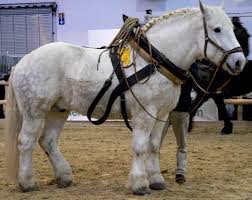
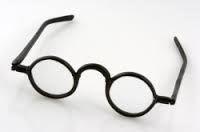
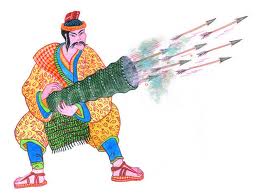


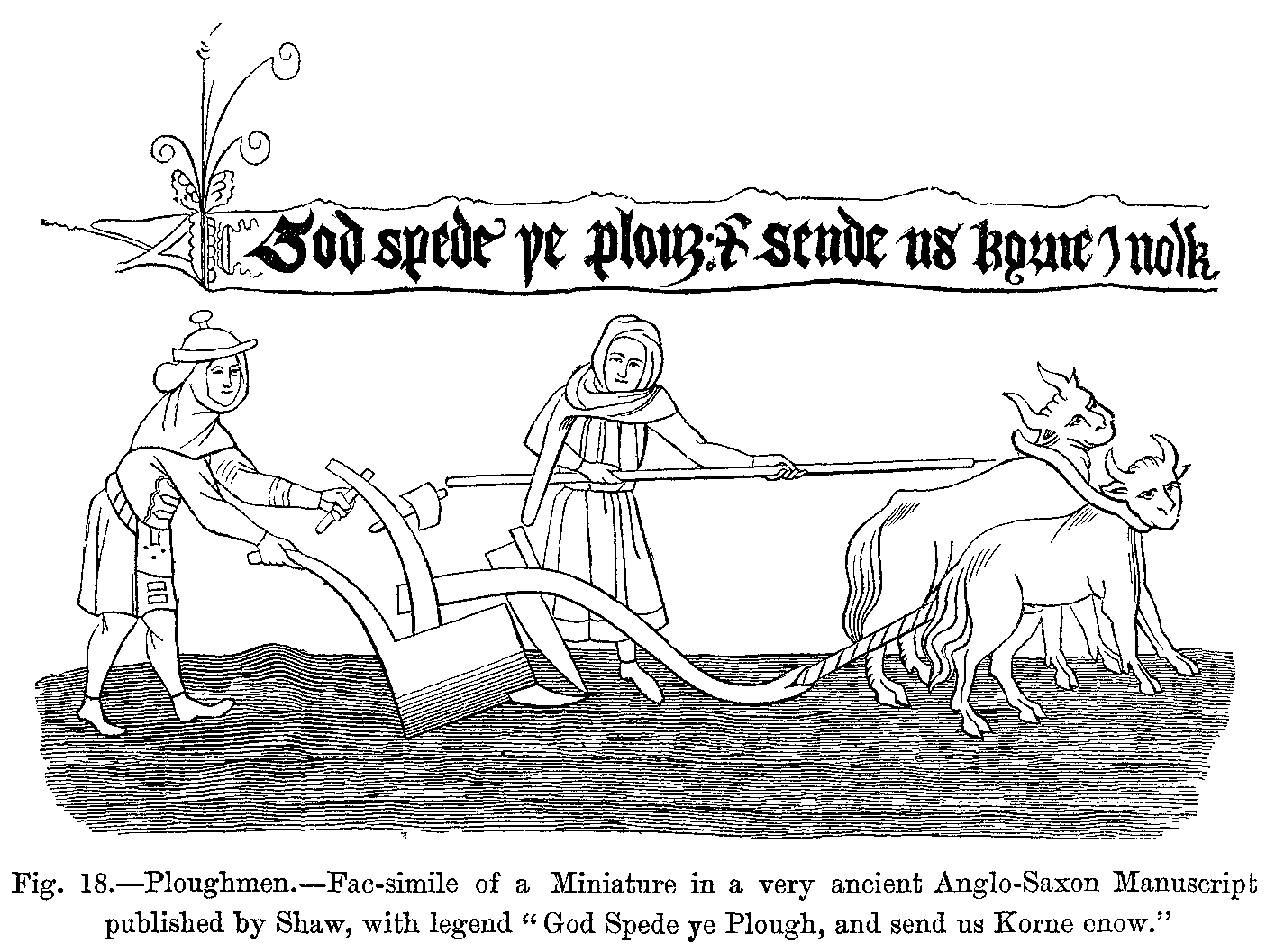

The engineers who, in the
sixth century A.D., brought the great monolith that caps the tomb of Theodoric
across the Adriatic and set it in place were in no way inferior to the Greek
and Roman engineers. The twelfth century cathedrals
of France represent a knowledge of engineering, of stresses and strains, and
a mechanical ingenuity far beyond anything dreamed of in classical times. The
Athenian Parthenon, no
matter what its aesthetic qualities, was but child's play as engineering compared
to buildings like the cathedrals at Rheims and Amiens.
It is perhaps hard for us, who have been educated in the fag end of the traditional
humanistic worship of the classical peoples, to realize that what happened in
the ninth and tenth centuries of our era in North-Western Europe was an economic
revolution based on animal power and mechanical ingenuity which may be likened
to that based on steam power which took place in the late eighteenth and early
nineteenth centuries. It shifted the economic and political centre of gravity
away from the Mediterranean with its technological ineptitude to the north-west,
where it has been ever since. This shift may be said to have had its first official
recognition in the two captures of Constantinople in 1203 and 1204. It is customary
from the philological point of view to regard these captures as a horrible catastrophe
to light and learning, but in fact they actually led
to the wiping out of the most influential centre of unprogressive backward-looking
traditionalism there was in Europe.
In view of the things the Greeks and Romans did not know, it is possible that
the real reason for the so-called darkness of the Dark Ages was the simple fact
that they were still in so many ways so very classical.
It is well to remember things of this kind when we are told about the charm
of life in Periclean Athens or in the Rome of the Antonines, and how superior
it was to that of all the ages that have succeeded them. The inescapable facts
are that the Greek and Roman civilizations were based on slavery of the most
degrading kind, that slaves did not reproduce themselves, that the supply was
only maintained by capture in predatory warfare, and that slavery is incompatible
with the creation of a highly developed technology.
Although a few of the highly educated Greeks went in for pure mathematics and
theoretical science neither they nor the educated Romans ever lowered themselves
to banausic pursuits. They never thought of doing laborious,
mechanical things more efficiently or with less human pain and anguish-unless
they were captured and sold into slavery, and what they thought then did not
matter. As all these things in the end are of great ethical importance,
it should also be remembered that the so cultured Greeks left it to the brutal
Romans to discover the idea of humanity, and that it
was not until the second century of our era that the idea of personality was
first given expression. If the educated
Greeks and Romans had demeaned themselves by going in for civil technology as
hard as they did for a number of other things the story might have been different.
But they did not, even in matters that would have been greatly to the advantage
of the governing groups in society.
Thus, the Romans are famous for the military roads they built all over the Empire,
and the Dark and Middle Ages are held up to scorn for having let those roads
go to pieces. However, if we think that those roads were not constructed for
civil traffic but as part of the machinery of ruthless military domination of
subject peoples, it is possible to regard their neglect as a betterment. Those
later Ages substituted other kinds of roads for the Roman variety, roads that
were not paved with cemented slabs of stone for the quicker movement of the
slogging legions, but roads that, if paved at all, were paved with cobbles,
which in many ways and from many unmilitary points of view were more efficient
It is significant that the world has never gone back to the Roman methods of
road building, and that as late as the days of my own youth streets in both
London and New York were still paved with cobbles.
To take another example: the Greeks were great seamen. The Athenian Empire was
a maritime empire. But the Greeks rowed and did not
sail. If you cannot beat up into the wind you cannot sail. All the
Greeks' sails enabled them to do was to blow down the wind a little faster.
They did not dare to venture beyond sight of land. The rudder at the end of
the keel and the lateen and fore and aft sails, like the mariner's compass,
were acquisitions of the Dark and Middle Ages. Actually, until the Renaissance
and even later, the Mediterranean peoples never learned how to do what we call
sailing. The Battle of Lepanto, in 1571, was fought by men in rowboats-large
row-boats, to be sure-which grappled with each other so that their men could
fight it out hand to hand. The test as between the thought based on the ancient
row-boat techniques and that based on the mediaeval deep-water sailing came
seventeen years after Lepanto, when the great Spanish Armada met the little
English fleet. This was the crucial battle in the last long-drawn-out attempt
of the Mediterranean to recover the hegemony it had lost before the end of the
tenth century and in it went down to utter and disastrous defeat. Within a little
more than a hundred years it was distant England that held Gibraltar and Port
Mahon and was the great Mediterranean sea power.
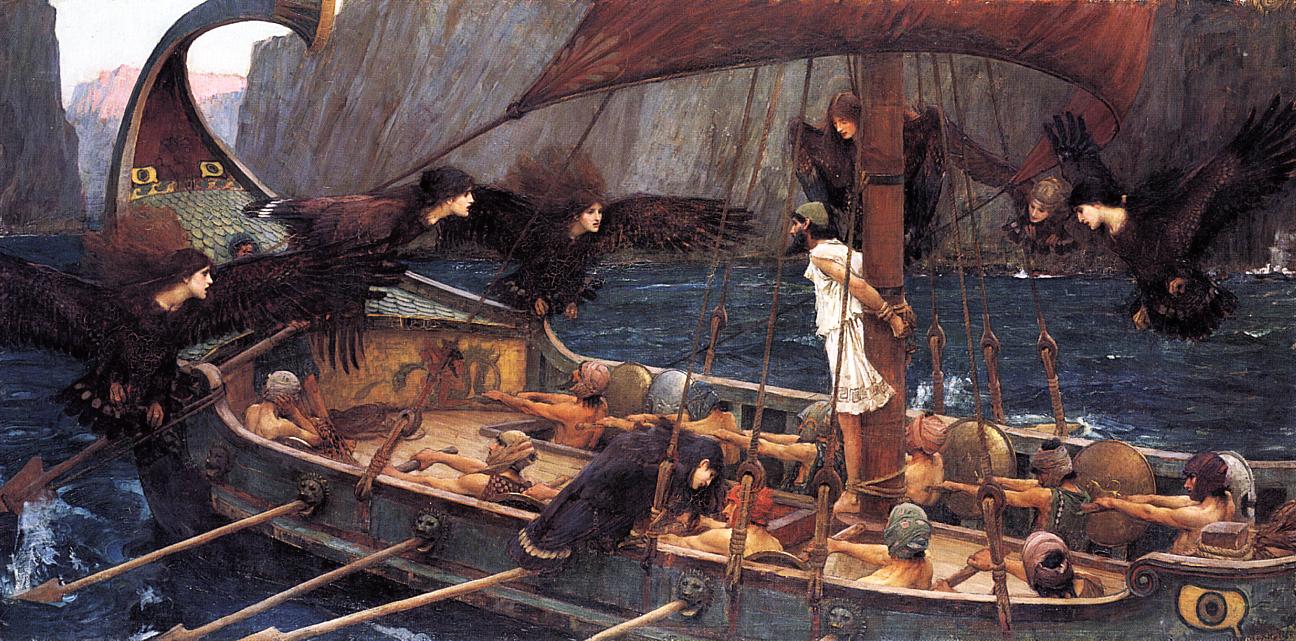
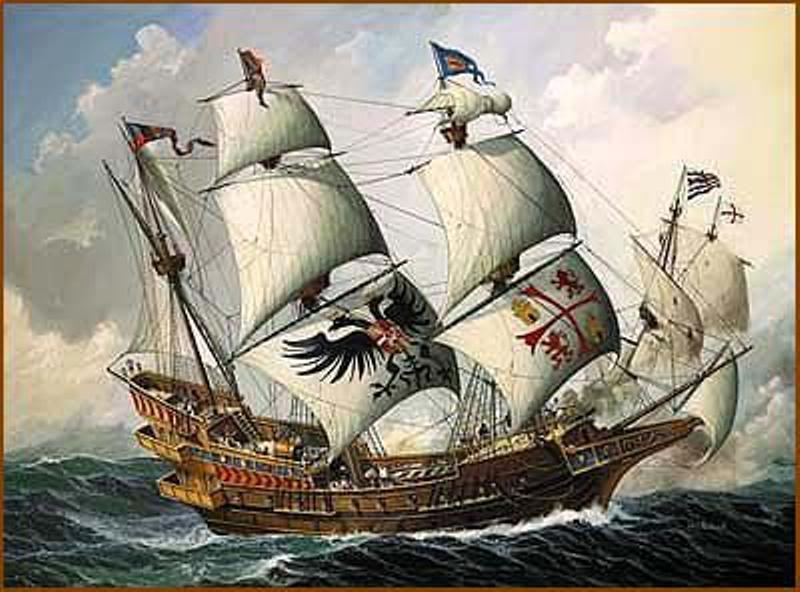
On the intellectual and
administrative side of ancient life we meet the same lack of mechanical ingenuity.
Few people have been more given to books and reading than the upper classes
of Greece and Rome. Books were made by copying by hand. The trade in them flourished
at Athens, at Alexandria, and at Rome. Great libraries were formed in the Hellenistic
period and in the early centuries of the Roman Empire. Plato says that in his
time a copy of Anaxagoras could be bought for a drachma, which, according to
the Oxford Dictionary, may be considered as being worth less than twenty-.five
cents. Pliny, the Younger, in the second century of our era, refers to an edition
of a thousand copies of a text. Had the Romans had any mechanical way of multiplying
the texts of their laws and their legal and administrative rulings and all the
forms needed for taxation and other such things, an infinite amount of time
and expense would have been saved. But I cannot recall that I have either read
or heard of any attempt by an ancient to produce a book or legal form by mechanical
means.
In its way the failure of the ancients to address their
minds to problems of the kinds I have indicated is one of the most cogent criticisms
that can be made of the kind of thought in which they excelled and of its great
limitations. The Greeks were full of all sorts of ideas about all
sorts of things, but they rarely checked their thought by experiment and they
exhibited little interest in discovering and inventing ways to do things that
had been unknown to their ancestors. They refined on ancient processes, and
in the Hellenistic period they invented ingenious mechanical toys, but it is
difficult to point to any technological or labour-saving devices invented by
them that were of any momentous social or economic importance. This is shown
in several odd ways. For one, the learned writers of
accounts of daily life in ancient times have no hesitancy in mixing up details
taken from sources that are generations apart, as though they all related to
one unchanging state of affairs. For another, modern students have
not hesitated to play up as a great and profound virtue the lack of initiative
of the Greek craftsmen in looking for new subjects and new manners of work.
Thus Percy Gardner, lauding the Greek architects and stone-cutters, in his article
on Greek Art in the eleventh edition of the Encyclopaedia Britannica, says,
'Instead of trying to invent new schemes, the mason contents himself with improving
the regular patterns until they approach perfection.' One can hear the unction
drip from that deadly word 'perfection'-one of the greatest inhibitors of intelligent
thought that is known to man. The one epoch-making discovery in architectural
construction that was made by the classical peoples seems to have been the arch-but
the Romans had to bring it with them to Byzantium. Apparently there were no
Greek voussoirs, i.e. stones so cut and shaped as to fit together in an arch
or vault.
Learned men have devoted many large and expensive volumes to the gathering together
of all the literary evidence there is about classical painting and drawing and
to the reproduction of all the specimens of such drawing and painting as have
been found. It appears from these books that there are no surviving classical
pictorial statements, except such as were made incidentally in the decoration
of objects and wall surfaces. For such purposes as those there was no need or
call for methods to exactly repeat pictorial statements. From the point of view
of art as expression or decoration there is no such need, but from that of general
knowledge, science, and technology, there is a vast need for them. The lack
of some way of producing such statements was no less than a road block in the
way of technological and scientific thought and accomplishment.
Lest it be thought that in saying this I am merely expressing a personal prejudice,
I shall call your attention to what was said about it by a very great and unusually
intelligent Roman gentleman, whose writings are held in particularly high esteem
by all students of classical times. Some passages in the Natural History of
Pliny the Elder, a book that was written in the first century of our era, tell
the story in the most explicit and circumstantial of manners. As pointed out
by Pliny, the Greeks were actually aware of the road block from which they suffered,
but far from doing anything about it they accommodated
themselves to it by falling back into what can only be called a known and accepted
incompetence. More
than that, I believe, they built a good deal of their philosophy' about this
incompetence of theirs. In any case, what happened affords a very apposite example
of how life works under the double burden of a pessimistic philosophy and a
slave economy. There is nothing more basically optimistic than a new and unprecedented
contrivance, even though it be a lethal weapon.
Pliny's testimony is peculiarly valuable because he was an intelligent eye-witness
about a condition for which, unfortunately, all the physical evidence has vanished.
He cannot have been the only man of his time to be aware of the situation and
the call that it made for ingenuity. Seemingly his statement has received but
slight attention from the students of the past. This is probably due to the
fact that those students had their lines of interest laid down for them before
the economic revolution that camee to England in the late eighteenth and early
nineteenth centuries and did not reach Germany until after 1870, at a time when
the learned and the gentry knew nothing and cared less about what they regarded
as merely mechanical things. The preoccupation of the
post-mediaeval schools and universities with classical thought and literature
was probably the greatest of all the handicaps to technological and therefore
to social advance. It would be interesting to see a chronological
list of the establishments of the first professorships of engineering. With
rare exceptions the mechanical callings and knowledges were in the past as completely
foreign to the thought and life of the students of ancient times as they were
to the young elegants who attended the Academy or walked and talked with Aristotle.
So far as I have been able to observe they still are.
In any event, according to Bohn, what Pliny said was this: 'In addition to these
(Latin writers), there are some Greek writers who have treated of this subject
(i.e. botany)... Among these, Crateuas, Dionysius, and Metrodorus, adopted a
very attractive method of description, though one which has done little more
than prove the remarkable difficulties which attended it. It was their plan
to delineate the various plants in colours, and then to add in writing a description
of the properties which they possessed. Pictures, however, are very apt to mislead,
and more particularly where such a number of tints is required for the initiation
of nature with any success; in addition to which, the diversity of copyists
from the original paintings, and their comparative degrees of skill, add very
considerably to the chances of losing the necessary degree of resemblance to
the originals...' (Chap. 4, Book 25).
'Hence it is that other writers have confined themselves to a verbal description
of the plants; indeed some of them have not so much as described them even,
but have contented themselves for the most part with a bare recital of their
names, considering it sufficient if they pointed out their virtues and properties
to such as might feel inclined to make further inquiries into the subject'
(Chap 5, Book 25 - Quoted by permission of G. Bell & Sons, Ltd., the present
publishers of Bohn's Library).
The plant known as "paeonia"
is the most ancient of them all. It still retains the name of him who was the
first to discover it, being known also as the "pentorobus" by some,
and the "glyciside" by others; indeed this is one of the great difficulties
attendant on forming an accurate knowledge of plants, that the same object had
different names in different districts' (Chap. 10, Book 25). '
It is to be noted that in his account of the breakdown of Greek botany, Pliny
does not fall back upon general ideas of a woolly kind. There is no 'Zeitgeist'
explanation, no historicism, no suggestion that things were not done simply
because people in their wisdom and good taste preferred not to do them even
though of course they could have done them if they had wanted to. Pliny's reason
is as hard and brutal a fact as a bridge that has collapsed while being built.
This essay amounts to little more than a summary account of the long slow discovery
of ways to erect that bridge.
In view of this I shall rephrase what Pliny said: The Greek botanists realized
the necessity of visual statements to give their verbal statements intelligibility.
They tried to use pictures for the purpose, but their only ways of making pictures
were such that they were utterly unable to repeat their visual statements wholly
and exactly. The result was such a distortion at the hands of the successive
copyists that the copies became not a help but an obstacle to the clarification
and the making precise of their verbal descriptions. And so the Greek botanists
gave up trying to use illustrations in their treatises and tried to get along
as best they could with words. But, with words alone, they were unable to describe
their plants in such a way that they could be recognized- for the same things
bore different names in different places and the same names meant different
things in different places. So, finally, the Greek botanists gave up even trying
to describe their plants in words, and contented themselves by giving all the
names they knew for each plant and then told what human ailments it was good
for. In other words, there was a complete breakdown of scientific description
and analysis once it was confined to words without demonstrative pictures.
What was true of botany as a science of classification
and recognition of plants was also true of an infinite number of other subjects
of the very greatest importance and interest to men. Common nouns
and adjectives, which are the materials with which a verbal description is made,
are after all only the names of vaguely described classes of things of the most
indefinite kind and without precise concrete meanings, unless they can be exemplified
by pointing to actual specimens. In the absence of actual specimens the best
way (perhaps the only way) of pointing is by exhibiting properly made pictures.
We can get some idea of this by trying to think what a descriptive botany or
anatomy, or a book on machines or on knots and rigging, or even a sempstress's
handbook, would be like in the absence of dependable illustrations. The only
knowledge in which the Greeks made great advances were geometry and astronomy,
for the first of which words amply suffice, and for the second of which every
clear night provides the necessary invariant image to all the world.
Ali kinds of reasons have been alleged in explanation of the slow progress of
science and technology in ancient times and in the ages that succeeded them,
but no reference is ever made to the deterrent effect of the lack of any way
of precisely and accurately repeating pictorial statements about things observed
and about tools and their uses. The revolutionary techniques that filled this
lack first came into general use in the fifteenth century. Although we can take
it for granted that the making of printed pictures began some time about 1400,
recognition of the social, economic, and scientific, importance of the exact
repetition of pictorial statements did not come about until long after printed
pictures were in common use. This is shown by the lateness of most of the technical
illustrated accounts of the techniques of making things. As examples I may cite
the first accounts of the mechanical methods of making exactly repeatable statements
themselves. Thus the first competent description of the tools and technique
of etching and engraving was the little book that Abraham Bosse published in
1645; the first technical account of the tools and processes used in making
types and printing from them was that published by Joseph Moxon in 1683; and
the first similar account of woodcutting, the oldest of all these techniques,
was the Traité of J. M. Papillon, which bears on its title page the date
1766. It is not impossible that Moxon's Mechanick Exercises, which were published
serially in the last years of the seventeenth century, had much to do with England's
early start in the industrial revolution.
Anyone who is gifted with the least mechanical ingenuity can understand these
books and go and do likewise. But he can do so only because they are filled
with pictures of the special tools used and of the methods of using them. Parts
of Moxon's account of printing can be regarded as studies in the economy of
motion in manipulation. I have not run the matter down, butI should not be surprised
if his book were not almost the first in which such things were discussed.
Of many of the technologies and crafts requiring particular manual skills and
the use of specialized tools there seem to have been no adequate accounts until
the completion of the great and well illustrated Encyclopaedia of Diderot and
his fellows in the third quarter of the eighteenth century, just before the
outbreak of the French Revolution. But the Encyclopaedia was a very expensive
and very large set of volumes, intended for and limited to the use of the rich.
Curiously, the importance of its contribution to a knowledge of the arts and
crafts has attracted comparatively little attention as compared to that which
has been given to its articles on political matters, although there is good
reason to think that they had equally great results.
The last century is still so close to us and we are so busy keeping up with
the present one, that it is hard for us to realize the meaning of the fact that
the last hundred and fifty years have seen the greatest and most thorough going
revolution in technology and science that has ever taken place in so short a
time. In western Europe and in America the social, as well as the mechanical,
structure of society and life has been completely refashioned. The late Professor
Whitehead made the remarkable observation that the greatest invention of the
nineteenth century was that of the technique of making inventions. But he did
not point out that this remarkable invention was based in very large measure
on that century's sudden realization that techniques and technologies can only
be effectively described by written or printed words when they are accompanied
by adequate demonstrative pictures.
The typical eighteenth-century methods of book illustration were engraving and
etching. Etchings and engravings have always been expensive to make and to use
as book illustrations. The books that were fully illustrated with them were,
with few exceptions, intended for the consumption of the rich and the traditionally
educated classes. In the eighteenth century the title pages of these books sometimes
described them as being 'adorned with elegant sculptures', or other similar
words. The words 'adorned' and 'elegant' tell the story of their limitations,
mental and financial alike. Lest it be thought that the prase I have just quoted
came from some polite book of verse or essays, I may say that it has stuck in
my memory ever since at the age of ten I saw it on the title page of a terrifying
early eighteenth-century edition of Foxe's Martyrs, in which the illustrators
went all out to show just what happened to the Maryian heretics. Under the circumstances
I can think of few phrases that throw more light on certain aspects of eighteenth-century
life and thought.
Although hundreds of thousands of legible impressions could be printed at low
cost from the old knife-made woodcuts, the technique of woodcutting was not
only out of fashion in the eighteenth century, but its lines were too coarse
and the available paper was too rough for the woodcut to convey more than slight
information of detail and none of texture.
At the end of the eighteenth century and the beginning of the nineteenth century
a number of very remarkable inventions were made. I shall mention but three
of them. First, Bewick,
in the 1780's, developed the technique of using an engravers, tool on the end
of the wood, so that it became possible to produce from a wood-block very fine
lines and delicately gradated tints, provided it were printed on smooth and
not too hard paper. Next, in 1798,
Robert, in France, invented, and shortly afterwards, in England, Fourdrinier
perfected, a paper-making machine, operated by power, either water or
steam, which produced paper by a continuous process. It also made possible the
production of paper with a wove surface that was smoother than any that had
previously been made in Europe. When fitted with calendar roils the machine
produced paper that was so smooth it was shiny. Finally, just before 1815,
Koenig, a German resident in England, devised for the (London) Times
a printing press that was operated by power and not by the strength of men's
backs. In connection with a revival of Ged's earlier invention of stereotyping,
these inventions brought about a very complete revolution in the practice of
printing and publishing. The historians of printing have devoted their attention
to the making of fine and expensive books, and in so doing they have overlooked
the great function of books as conveyors of information. The history of the
cheap illustrated book and its role in the self-education of the multitude has
yet to be written.
It took but a comparatively short time for these three or four inventions to
spread through the world. As they became familiar there was such a flood of
cheap illustrated informative books as had never before been known. Nothing
even approaching it had been seen since the sixteenth century. It took only
a few decades for the publishers everywhere to begin turning out books of this
kind at very low prices. In a short time the world ceased to talk about the
'art and mystery' of its crafts. In France they said that the Revolutionary
law abolishing the guilds opened the careers to the talents, but it was actually
these heap illustrated informative books that opened the crafts to everyone,
no matter how poor or unlearned, provided only that he knew how to read and
to understand simple pictures. As examples of this I may cite the well-known
Manuels Roret, the publication of which goes back to 1825, and the English Penny
Cyclopaedia which began in 1833. It is to be noted that for a long time in the
nineteenth century the upper classes and the traditionally educated made few
contributions to the rapidly lengthening list of new inventions, and that so
many of those inventions were made by what in England until very recent years
were condescendingly referred to as 'self-educated men'. The fact was that the
classicizing education of the men who were not self educated prevented them
from making inventions.
In the Renaissance they had found a solution of the dilemma of the Greek botanists
as described by Pliny. In the nineteenth century informative books usefully
illustrated with accurately repeatable pictorial statements became available
to the mass of mankind in western Europe and in America. The result was the
greatest revolution in practical thought and accomplishment that has ever been
known. This revolution was a matter as momentous from the ethical and political
points of view as from the mechanical and economic ones. The masses had begun
to get the one great tool they most needed to enable them to solve their own
problems. Today the news counters in our smallest towns are piled with cheap
illustrated magazines at which the self-consciously educated turn up their noses,
but in those piles are prominently displayed long series of magazines devoted
to mechanical problems and ways of doing things, and it would be well for the
cultured if they but thought a little about the meaning of that.
I think it can be truthfully said that in 1800 no man anywhere, no matter how
rich or highly placed, lived in such physical comfort or so healthily, or enjoyed
such freedom of mind and body, as do the mechanics of today in my little Connecticut
town.
If any one thing can be credited with this it is the pervasion of the cheap
usefully informative illustrated book
Prints
and visual communications, The Road Block Broken - Tkhe Fifteenth
Century pags 21 - 22 William
M.lvins Jr:
Prints began to pervade
the life and thought of Western Europe in the fifteenth century. It is therefore
necessary to take a glance at what we have been told about that century.
Probably the worst way there is to discover the most
important thing done in any history period is to take the word of that period
for it. What to the generation of its occurrence is merely a casual
happening, an amusing toy, or an impractical intellectual or physical adventure,
in time frequently becomes all-important for the world.
In spite of this we are still asked to think of the
Renaissance in terms of what some literary people of that time thought were
the most important things it did. Thus almost every book dealing
with the Renaissance says that the principal events of the fifteenth century
were the recoveries of Greek thought and of the classical forms of art. This
statement is so customary and is made with such an air of finality that most
of us have come to believe it. And, yet, on the very face of the
record, it is impossible to believe it. We have forgotten that the literary
and artistic men who evolved and told us this fairy tale were much more ignorant
of the Middle Ages, and even of the Renaissance itself, than the Middle Ages
were ignorant of Greek thought.
In the first place, what is called Greek thought is not a homogeneous body of
doctrine and knowledge reflecting a reasoned and unified attitude towards life
and the world what remains of it is a highly accidental heap of notions and
odds and ends of the most violently contradictory kinds. If you care to look
for it you can find a phrase in it that can be twisted to the purpose of almost
anything you want to argue on any side of any problem. The
Greeks never agreed about anything, they actually knew very little, it was quite
customary for them to be intellectually dishonest, their arguments were designed,
not to bring out the truth, but to down the other fellow in a forensic victory,
and they had very loose and careless tongues. Although we are always
told that Aristotle discovered logic, it should be obvious that no one man could
possibly have been its discoverer. Much of Aristotle's teaching was very illogical,
and on the whole it undoubtedly hampered subsequent thought much more than it
helped it.
In the second place, it is easy to forget that many of the scholastic doctrines
and modes of thought which had dominated much of mediaeval thinking were specifically
Aristotelian, which is to say that they were Greek. The shift away from scholasticism
was not so much the result of any discovery of Greek thought as a revulsion
from it. That this shift took the initial form of a limited and superficial
fashion for neo-Platonism and for the exterior nudity, though not for the interior
content, of Roman art, can be regarded as little more than a passing phase of
the basic revolt.
However important it may have seemed to certain restricted and loquacious portions
of Renaissance society, this fashion in itself made singularly little difference
to the part of the world that was beginning to think new thoughts and to do
new things.
Contrary to what we have long been taught, the effective
thinking of the Renaissance was not merely a resurrection of classical ideas.
As we can see it today, the really great event of the Renaissance was the emergence
of attitudes, and kinds and objects of thought that were neither Aristotelian
nor Platonic, nor yet Greek at all, but in so far as they had never attracted
the attention of the writers and literary men, quite new and different. To a
great extent they were the results of materials and technological problems completely
unknown to the ancient world. What actually happened in the fifteenth century
was the effective beginning of that practical struggle for liberation from the
trammels of Greek ideas which has been the outstanding characteristic of the
last five hundred years.
Child's play as engineering compared to buildings like the cathedrals at Rheims and Amiens.
